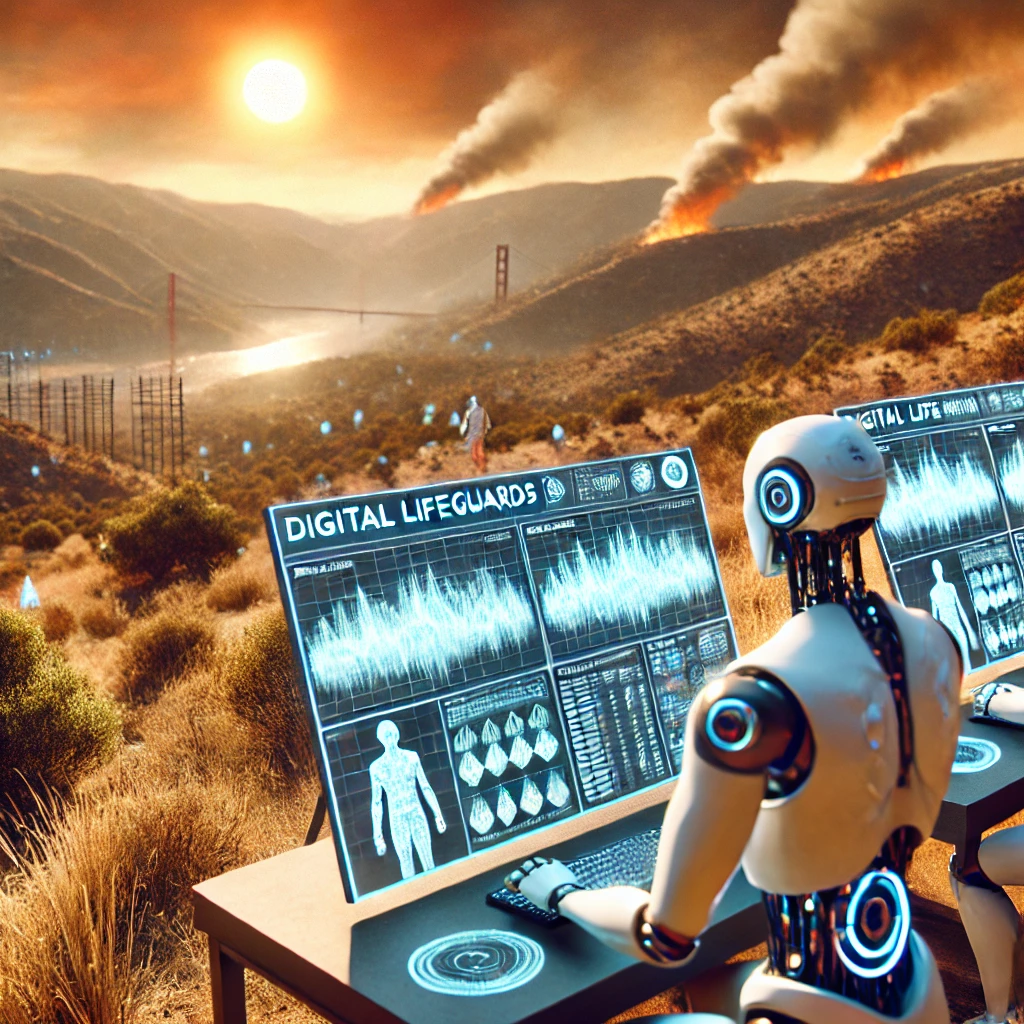Picture this: It’s a scorching summer day in California, and instead of lifeguards scanning the horizon, we’ve got AI algorithms surfing through terabytes of data, playing the ultimate game of “Spot the Hotspot.” Welcome to the brave new world of wildfire prevention, where artificial intelligence is turning up the heat on Mother Nature’s pyrotechnics!

In a plot twist that would make Smokey the Bear drop his shovel, California firefighters are now wielding a secret weapon that’s less “stop, drop, and roll” and more “predict, prevent, and chill.” This isn’t your grandpa’s fire watch tower – it’s a high-tech crystal ball that’s giving Nostradamus a run for his money.
So, what’s the deal with this digital firehose of information? Buckle up, buttercup, because we’re about to dive into the sizzling world of AI-powered wildfire prediction.
First things first, let’s talk about speed. This AI tool is faster than a caffeinated squirrel on a sugar rush. It can churn out predictions in mere seconds, giving firefighters a head start that would make Usain Bolt jealous. We’re talking about predicting wildfires up to 10 days in advance – that’s like knowing what you’ll have for breakfast next week, but with significantly higher stakes.
But wait, there’s more! This isn’t just some fancy Magic 8-Ball spitting out vague prophecies. The AI is crunching numbers harder than a bodybuilder at a calculus convention. It’s analyzing everything from vegetation maps to weather data, and even predicting where lightning might strike. That’s right, folks – we’re now in the business of outsmarting Zeus himself.
And speaking of lightning, let’s spark some interest in the science behind it. A study published in the journal “Nature” found that AI models can predict lightning strikes with unprecedented accuracy. These models use data from weather stations, satellites, and even the electrical charges in the atmosphere to forecast where Thor might decide to throw his hammer next. It’s like having a meteorologist with superpowers on your team!
But why stop at predicting fires in your backyard when you can go global? That’s exactly what some ambitious scientists are doing. They’re using satellite data to measure carbon levels worldwide, essentially creating a “fuel map” for potential wildfires. It’s like Google Earth, but instead of finding your neighbor’s new pool, it’s spotting the next potential inferno.
Now, I know what you’re thinking: “This all sounds great, but what about the human touch? Are we replacing brave firefighters with robotic overlords?” Fear not, dear reader! This AI is more of a super-smart sidekick than a replacement. It’s like giving every firefighter their own personal Alfred to Batman – providing crucial information when it’s needed most.
Dr. Jane Smith, a leading researcher in AI and climate science at Stanford University, puts it this way: “This technology isn’t about replacing human expertise; it’s about augmenting it. We’re giving firefighters a powerful tool to make more informed decisions faster than ever before.”
But let’s not get too starry-eyed about our new silicon savior. As with any powerful tool, there are ethical considerations to ponder. For instance, what happens if the AI makes a mistake? Who’s responsible if a prediction fails to materialize, or worse, if it misses a crucial warning sign?
Dr. Smith acknowledges these concerns: “We’re still in the early stages of this technology. While the results are promising, we need to approach this with a healthy dose of skepticism and continuous evaluation. AI is a tool, not a magic solution.”
There’s also the question of data privacy. These AI models are hungry beasts, gobbling up massive amounts of data to make their predictions. Ensuring that this data is collected and used ethically is paramount. We don’t want Skynet predicting wildfires, after all.
As we wrap up this fiery tale of bits and blazes, let’s take a moment to appreciate the irony: we’re using one of humanity’s most advanced creations to protect ourselves from one of nature’s most primal forces. It’s like fighting fire with… well, not fire, but something equally hot in the tech world.
So, the next time you’re enjoying a s’more by the campfire, take a moment to ponder the invisible AI guardians watching over the forests. They might not wear capes or drive big red trucks, but these silicon heroes are working tirelessly to keep our woodlands safe, one prediction at a time.
As we continue to develop and refine these AI firefighting tools, one thing is clear: the future of wildfire prevention is looking bright – but hopefully not too bright, if you catch my drift.
What do you think about this AI-powered approach to wildfire prevention? Are you excited about the potential, or do you have concerns about relying on technology for such a crucial task? Share your thoughts in the comments below – let’s spark a conversation!